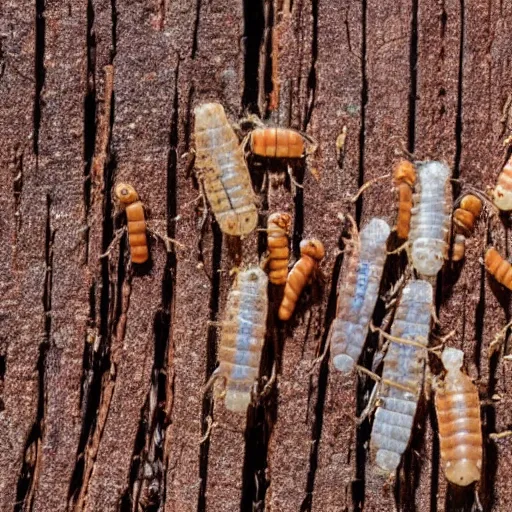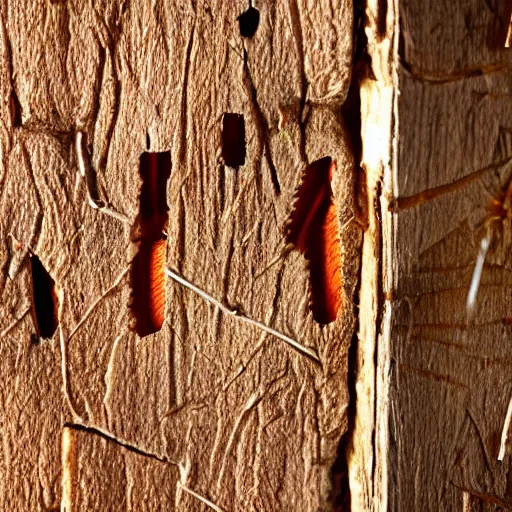How To Get Rid Of Bed Termites
Bed Termites…
What can I say…
They are those pesky little insects that just invite their way into your house and cause havoc!
So what can you do about them and what are they really?

Let’s talk about it, shall we?
Do You Have Bed Termites Living With You
Have you ever experienced a weird, itching sensation while you were in bed? If so, it could be due to bed termites.
These small, wingless insects feed on wood and other cellulose-based materials, which includes furniture, carpets, and, unfortunately, beds.
Let’s explore the signs of bed termite infestations and how to get rid of them ok…
What Is A Bed Termite Then?
Bed termites are small, white insects that feed on wood, paper, and other materials.
They are most commonly found in beds and other furniture, although they can also live in walls and other locations.
Bed termites are often mistaken for bed bugs, as they have similar physical characteristics.
However, bed termites have a distinctly different diet, and they are not known to feed on humans or animals.
Bed termites are nocturnal creatures, and they are most active at night.
They are most commonly found in warm and damp environments, such as near water sources or in areas with poor ventilation.
They can cause serious damage to furniture and other items in the home as well.
They can also spread quickly, so it is essential to address any of these infestations as soon as you can to stop them spreading.
Termite Identity LineUp
Although… identifying these pesky termites can be difficult, as they are small and often hidden in hard-to-reach places.
Start looking for small, white insects on or near beds, furniture, and other wood items.
You may also find small piles of powder near the termite nest, as this is a sign of their activity.
If you suspect you have bed termites, it is important to contact a pest control specialist for assistance.
Bed termites can cause serious damage, so it is important to address any infestations quickly.
Where Do These Little Blighters live?
They are often found in warm, humid climates, such as those found in the southern United States for one.
They can also be found in other areas of the world, such as Australia, Africa, and Asia.
Yet they do prefer to live in damp, dark environments and are typically found in beds, furniture, and other areas of the home where they can find food and shelter.
A natural instinct for all of us right?
If you think that you may have a bed termite infestation, it is important to inspect your furniture and other areas of the home for signs.
Look for small holes in wood, as well as sawdust and a musty odour.
Here goes the wrinkle of the nose…
Also, you should practice proper storage techniques to help prevent bed termite infestations.
This includes storing furniture and other items away from the home, such as in a garage or shed if you have one.
You should also keep your home clean and free of food particles and other debris, as these can attract bed termites.
What Are The Signs?
Those bed termite infestations can be difficult to spot, but there are some tell-tale signs that you should be on the lookout for.
- Small Tunnels or Holes in the Wood: Bed termites create small tunnels or holes in wooden furniture or other wooden items as they feed on the wood. These tunnels are often small, but they can be larger depending on the size of the infestation.
- Piles of Sawdust: As bed termites feed on the wood, they leave behind small piles of sawdust. This sawdust is a sign that bed termites are present and that there could be a large infestation.
See also Chezisam Queen Size Bed Frame: The Perfect Addition to Your Bedroom
- Winged Insects: Bed termites are often accompanied by winged insects. These insects can be seen flying around the wooden items in your home, and they are a sure sign of a bed termite infestation.
So…
If you suspect that you have a bed termite infestation, it’s important to take action as soon as possible.
You can also help to prevent bed termite infestations by regularly inspecting wooden items, keeping wood away from moisture, and repairing any visible damage.
Taking these steps can help to ensure that your home remains termite-free.
How To Prevent Those Little Critters
Luckily, there are several ways to prevent bed termites from invading your home.
Check for dark spots on the bed frame and bedding, as these can indicate termite activity.
It would help if you also looked for wood that appears to be damaged or weakened.
If you notice any of these signs, it’s important to take action right away.
Another way to prevent bed termites is to use a termiticide.
Termiticides are chemical insecticides that can be sprayed directly onto the bed frame and bedding to discourage termites from entering.
Be sure to follow the instructions on the label carefully and take any necessary safety precautions before using it though…
In addition to using a termiticide, you may also want to use natural repellants to keep termites away.
Cedar oil and diatomaceous earth are two of the most popular natural repellants.
Spraying cedar oil on the bed frame and bedding can help to repel termites while sprinkling diatomaceous earth around the bed frame can also be effective.
If you follow these little tips, you can help to prevent bed termites from invading your home and causing damage to your bed and bedding.
Regular inspections and using the right repellants and termiticides are key to keeping your bed termite-free.
And that’s a comforting thought don’t you agree?
How To Get Rid Of Them In Other Ways
Bed termites can be a serious nuisance in any home right?
These small, wood-eating insects can cause extensive damage to furniture, floors, walls, and more.
Yes… Really!
Fortunately, there are different steps you can take to get rid of bed termites and protect your home.
It’s also important to understand the potential dangers of leaving bed termites untreated.
These insects are capable of wreaking havoc on furniture, walls, and floors.
If left unchecked, bed termites can cause significant structural damage to your home, not just your bed as some people might think.
Chemical treatments are generally the most effective way to get rid of bed termites.
These treatments usually involve spraying a chemical insecticide directly onto the affected areas.
Finally, it’s important to explore ways to prevent bed termites from returning.
Yes, they can and do return…
So don’t throw away that spray just yet.
You know…
Those crumbs you leave around your chairs when you eat.
Well.
Most of us do anyway…
By removing any potential food or shelter sources can help keep them away for good.

Additionally, sealing cracks and crevices around windows and doors can help to make your home less attractive to bed termites.
And by following these steps, you can get rid of bed termites and protect your home from future infestations.
Have you ever experienced a weird, itching sensation while you were in bed?
If so, it could be due to bed termites.
They are small, wingless insects that feed on wood and other cellulose-based materials, which includes furniture, carpets, and, unfortunately, shock and horror!
Our beds.
Not good for you…
So if you do have these bed termites it’s time to go and get them.
